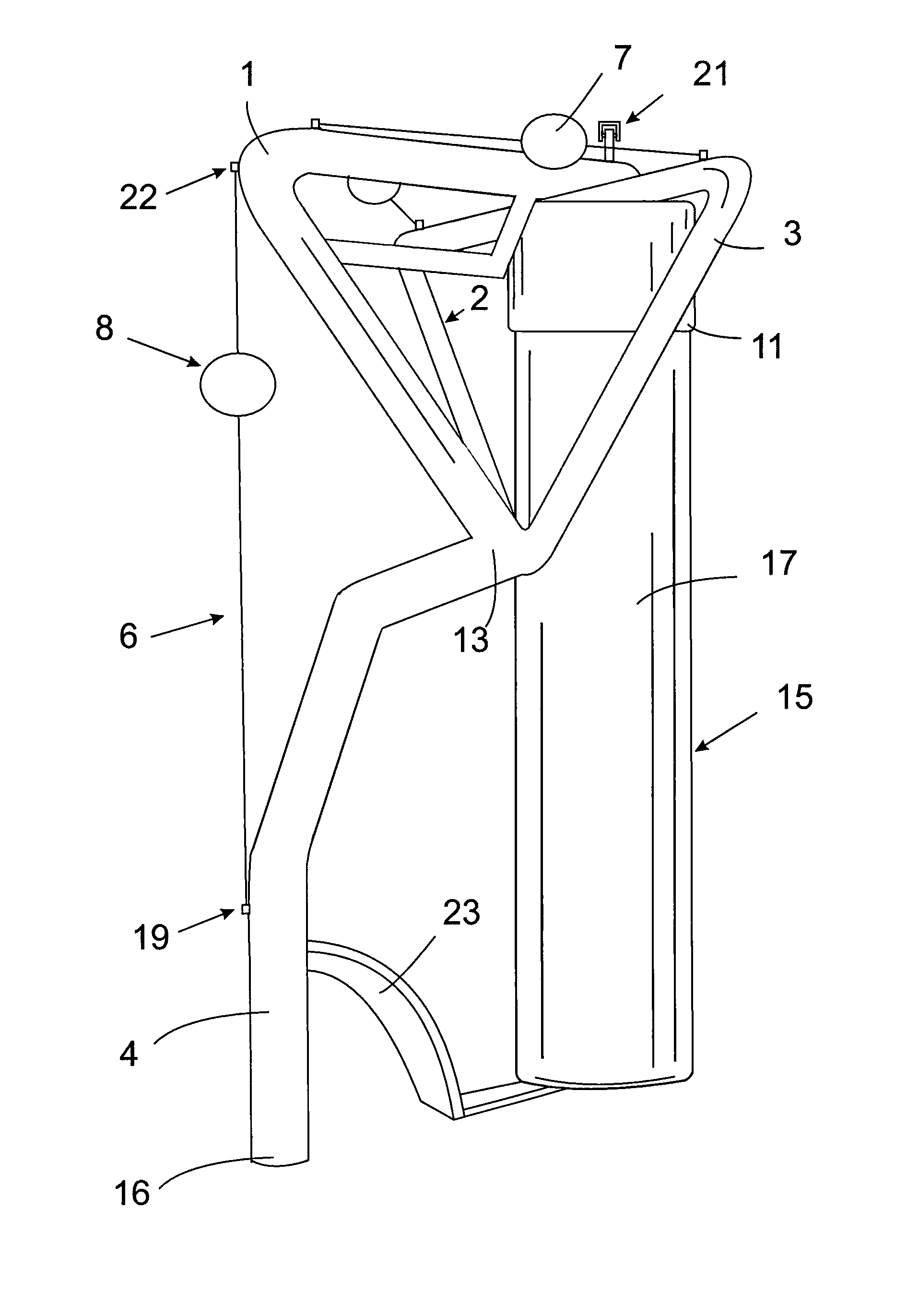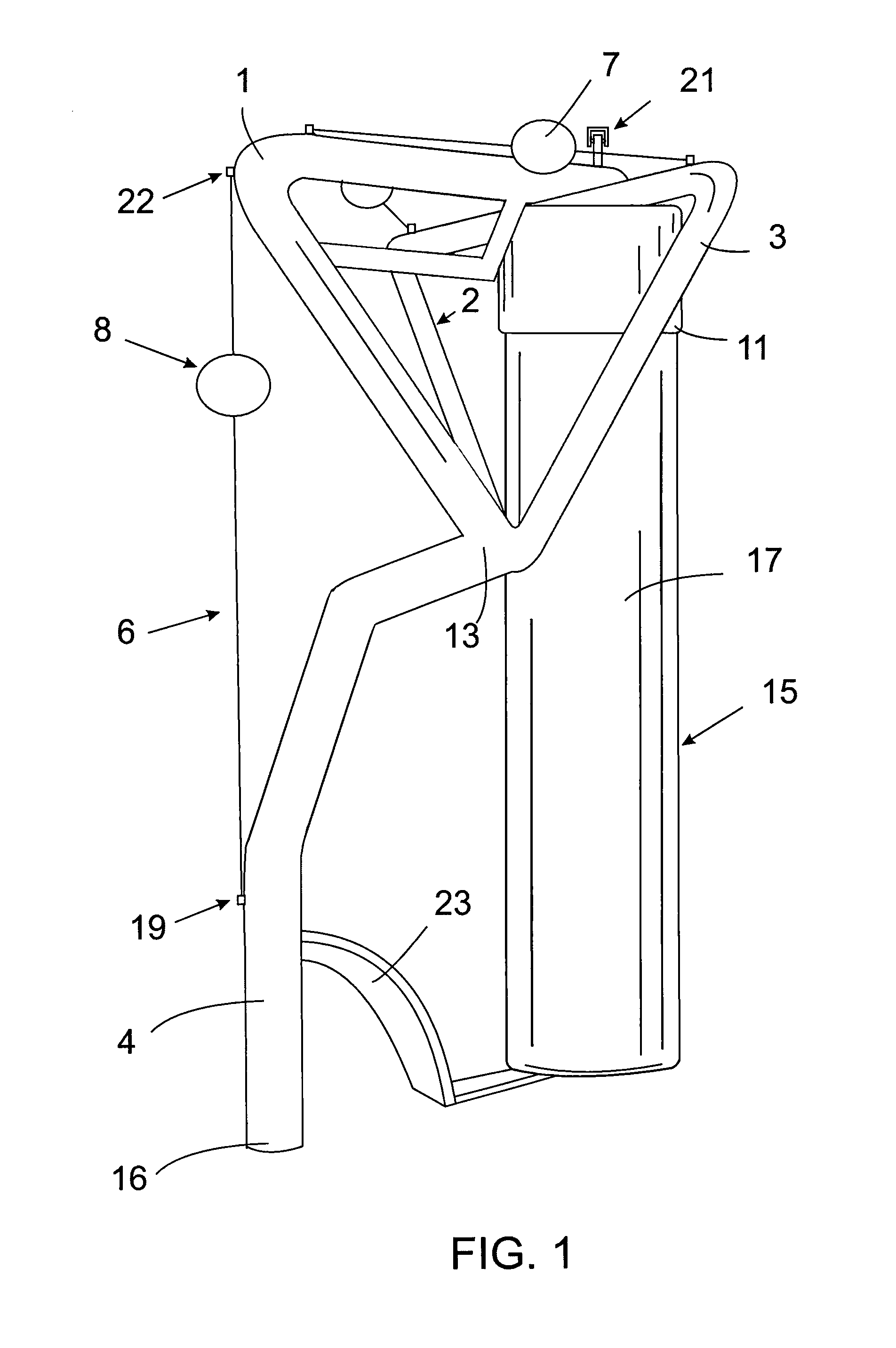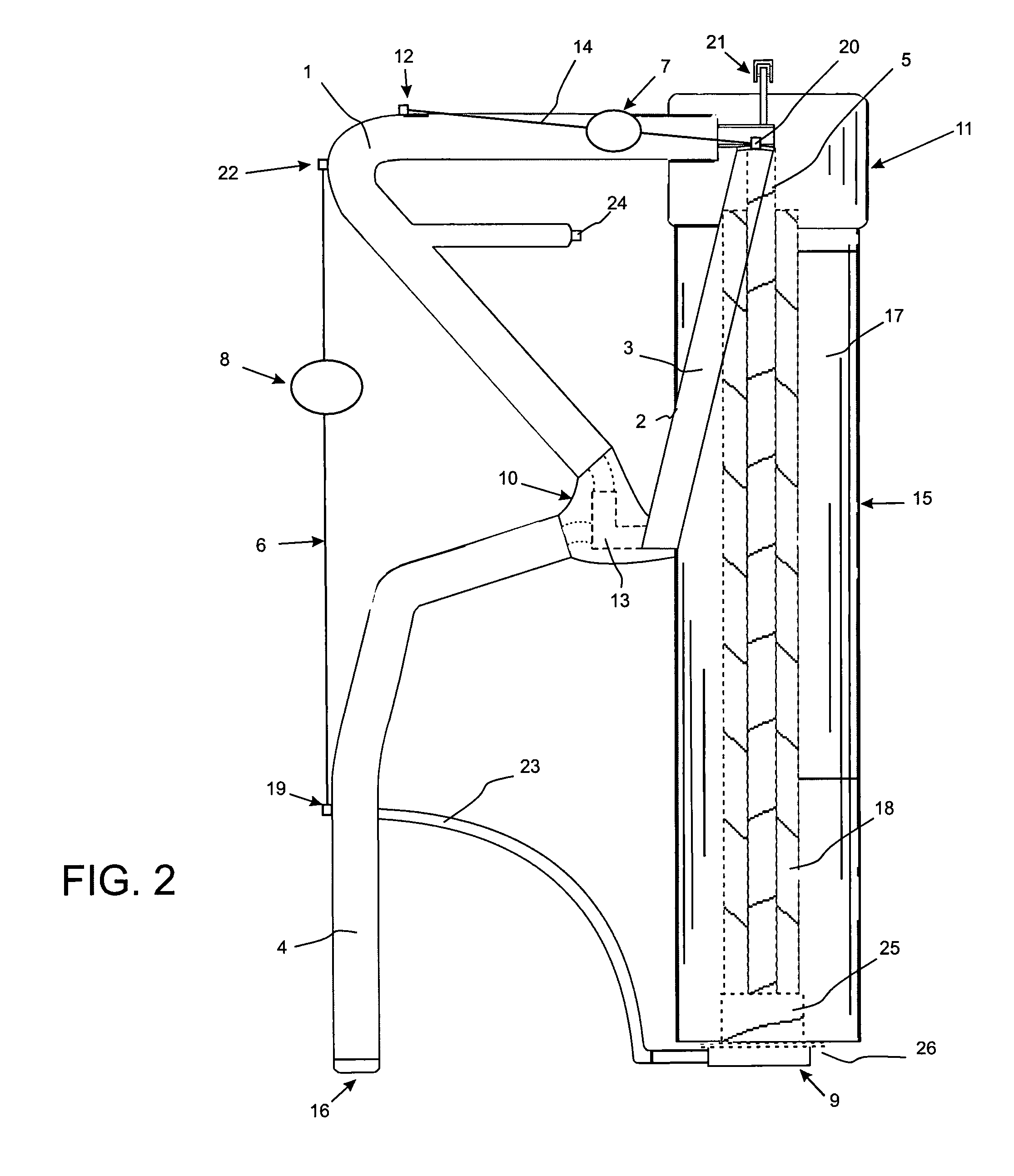Martial arts trainer
a martial arts and trainer technology, applied in the field of martial arts trainers, can solve the problems of less or greater density, affecting the training of athletes, and the density of bags, so as to facilitate improvement and enhance the efficiency of practitioners
- Summary
- Abstract
- Description
- Claims
- Application Information
AI Technical Summary
Benefits of technology
Problems solved by technology
Method used
Image
Examples
Embodiment Construction
[0077]A martial arts cross training device allows the practitioner to forcefully interact with at least two impact absorbent relatively cylindrically shaped vertically oriented striking surfaces. The first striking surface is angular and spanning the full length of a larger diameter cylinder or humanoid shaped striking surface. The device may also possess perpendicularly oriented armature member(s). This armature configuration forms upper left, lower left, upper right and lower right simulative and immersive training sectors that simulate a wide variety of offensive and defensive attacks and targets which facilitate improvement in the practitioners efficiency in the execution of a offensive and defensive actions such as but not limited to rebounding and ricocheting combinations of punches, parties, blocks, kicks, strikes and counter strikes which may be delivered to parallel points along at least two vertically oriented cylinders which span full height of the device.
[0078]The device...
PUM
 Login to View More
Login to View More Abstract
Description
Claims
Application Information
 Login to View More
Login to View More - R&D
- Intellectual Property
- Life Sciences
- Materials
- Tech Scout
- Unparalleled Data Quality
- Higher Quality Content
- 60% Fewer Hallucinations
Browse by: Latest US Patents, China's latest patents, Technical Efficacy Thesaurus, Application Domain, Technology Topic, Popular Technical Reports.
© 2025 PatSnap. All rights reserved.Legal|Privacy policy|Modern Slavery Act Transparency Statement|Sitemap|About US| Contact US: help@patsnap.com



